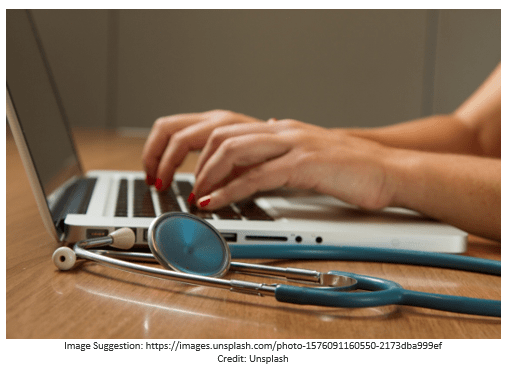This article is a guest post by Alicia Clark. All views/opinions/suggestions are that of the guest writer. This Website may or may not subscribe to them.

Healthcare is one of the few sectors where there’s a need for fast and continuous innovation. In recent years, the Internet of Things (IoT) has driven positive transformations in the industry, changes that have improved the efficiency of healthcare workers and patients alike.
IoT is now used for interconnected healthcare devices that can collect and analyse real-time information. The information is then sent to a centralized server for further analysis, leading to better healthcare services. Of course, it doesn’t end there. Here are just some of the examples of how IoT improves safety and efficiency in health care:
Remote monitoring
Remote monitoring is nothing new, but the pandemic has underscored its value. Due to the riskiness of in-patient visits, remote monitoring served as an alternative for collecting valuable patient data outside the clinic and facilitating care for a slew of conditions, from chronic diseases to recovery from acute episodes of care. To the uninitiated, it’s basically a process that involves the collection, transmission, evaluation, and communication of patient health data from electronic devices, such as wearable sensors, implanted equipment, and handheld instruments.
This technology is a game-changer when it comes to improving care delivery and outcomes. Its near-instant communication capabilities allow for earlier intervention, while its mobility results in patient satisfaction. If regulators enable health care institutions to extend the use of remote patient monitoring beyond the pandemic, innovators can use it as an opportunity to develop, test, and improve the technology to provide better care for patients.
Smart hospitals
Smart hospitals are healthcare institutions that function to optimize, redesign, and build new clinical processes, management systems, and infrastructure. This allows them to provide more valuable services, insights, and operational efficiency. These hospitals use digitized networking infrastructure to attain all these, and their framework is composed of three key layers: data, insight, and access. They’re becoming more and more prevalent these days, not only in the sense that hospitals and clinics are adopting electronic health records (EHR) to manage patient data, but also in the implementation of processes like online appointment schedules, digital check-ins, electronic path lab tests ordering and results, and more.
Virtual and Online learning
The internet has not only changed how patients are treated but how tomorrow’s medical professionals at every level are now being taught. With IoT devices being frequently used in surgery/operating rooms, medical students are now taught with this technology in mind. These IoT innovations also cover the practical applications of VR and AR. Another changing trend in education that is being aided by the IoT is remote learning through online courses. Students are able to use their connected devices to study and take examinations online – something that has become vital this year. And this doesn’t just apply to those on the frontline. For those that will specialize in the administrative side of running a hospital, they can take an online healthcare management degree that will teach them to identify the right tech solutions that today’s practices need. And with the IoT being the future this will mean an increase in online graduates with detailed knowledge on how to best implement this new technology into current healthcare systems. Having such expertise is crucial, considering how there’s a demand for smart hospitals and staff who can manage them.
Mobile healthcare
Also referred to as mHealth, mobile healthcare refers to the use of mobile phones and other wireless technology in medical care, primarily for educating the public about preventive healthcare services. But its use also extends to disease surveillance, treatment support, epidemic outbreak tracking, and chronic disease management.
Just like remote patient health monitoring, mHealth allows patients to communicate with their healthcare providers without having to see them face to face. For instance, secure messaging enables physicians to notify parents when their child is out of surgery. There are also apps that integrate with a patient’s EHR, allowing users to access their health data on their electronic devices. mHealth even enables healthcare practitioners to communicate with each other about patients thereby increasing their efficiency. With continued innovation, telehealth tech like mHealth can save more patient lives. The good news is that it is already being used in clinical trials, with pharmaceutical giants setting their sights on connected drug delivery platforms.
